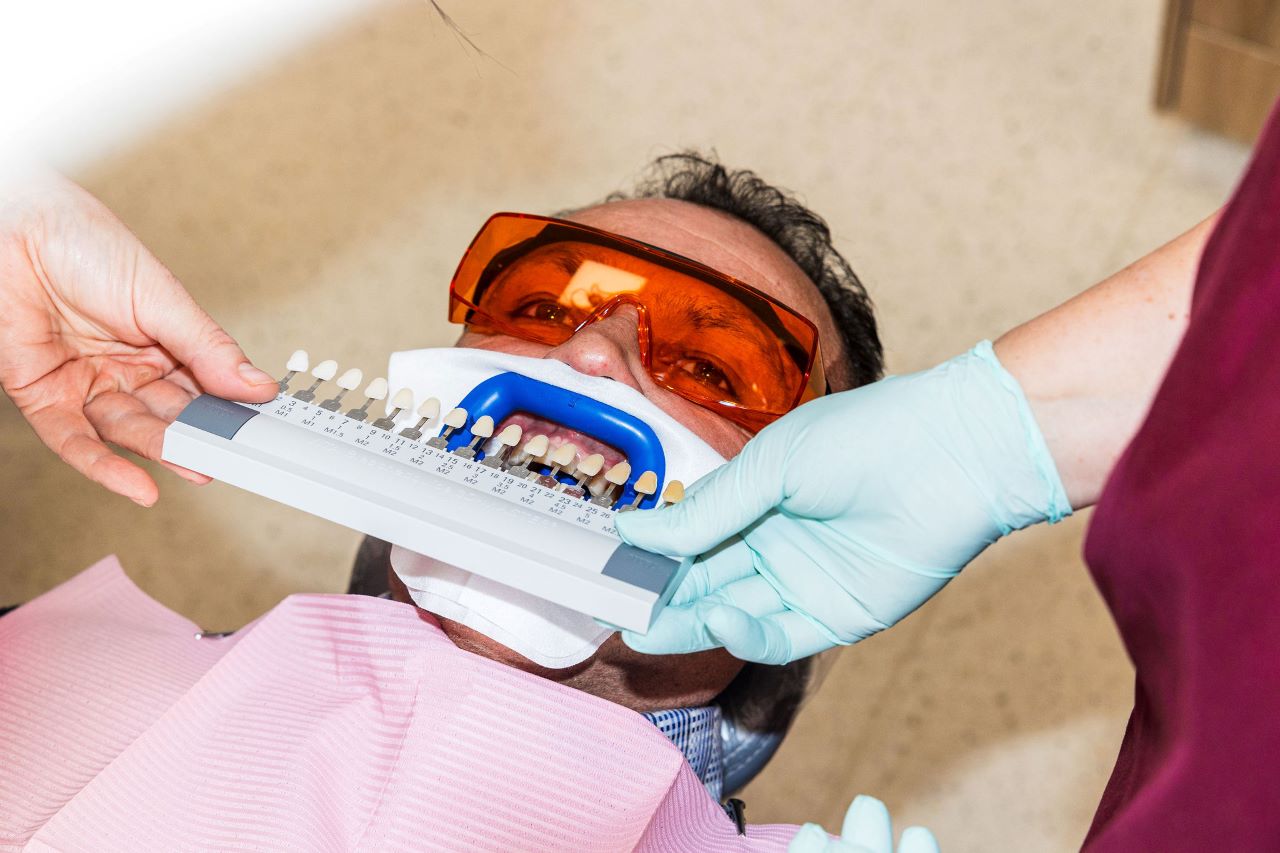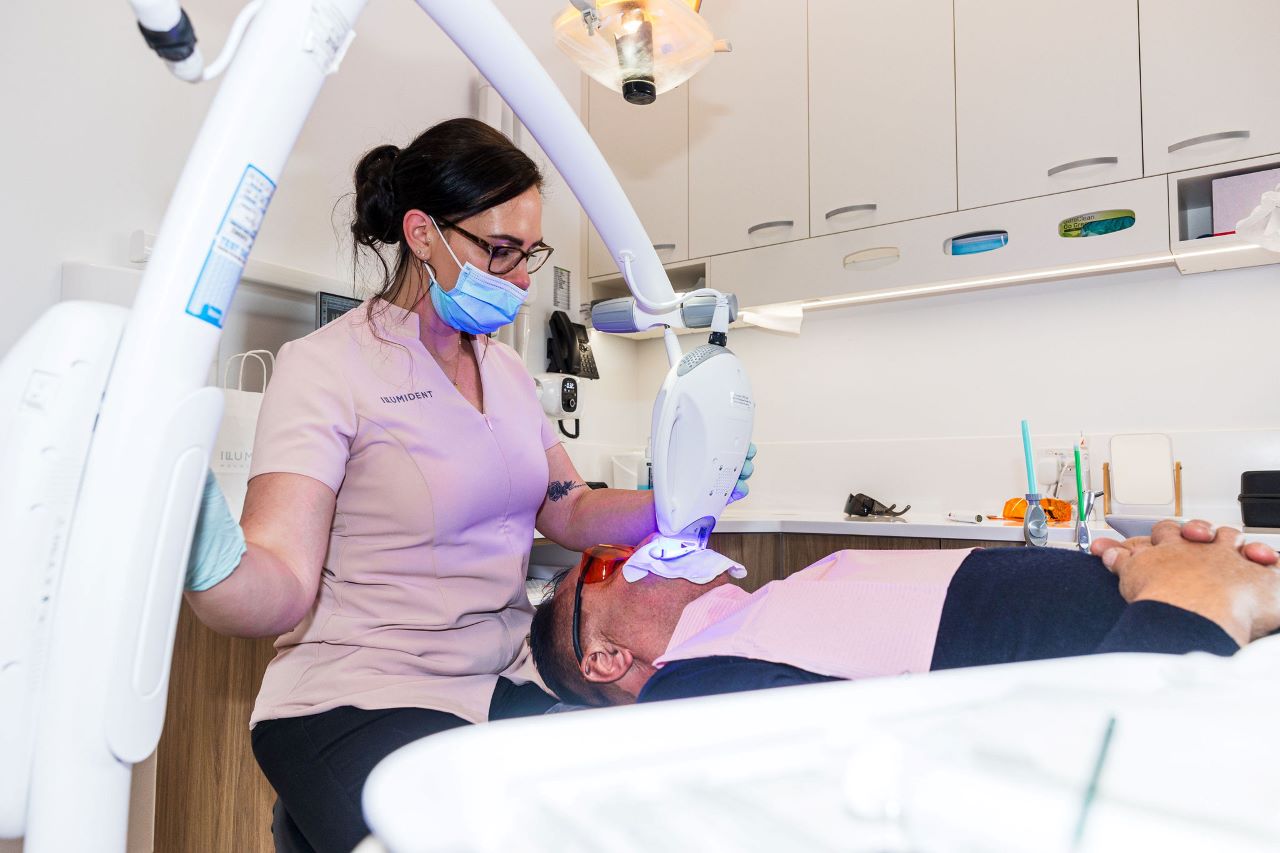You’ve decided it’s time to straighten your smile, but now you’re grappling with an even bigger decision…
Invisalign vs braces.
The good news is that there is no right or wrong answer here! Both Invisalign and braces are extremely effective teeth straightening solutions. But, like all dental treatments, both options come with their own set of pros and cons to be considered.
Our dentists in Mount Gambier and Port Fairy have helped many patients break down the Invisalign vs braces debate and find the best option to suit their smile and lifestyle.
Let’s take a look at the key differences between Invisalign vs braces, as well as the pros and cons of each, so you can make a more informed choice.
Invisalign: Pros and Cons
Invisalign uses a series of clear, plastic aligner trays to gently and gradually straighten your teeth. One of the key differences between Invisalign and braces is that Invisalign aligners are removable and must be replaced every few weeks throughout your treatment.
With the Invisalign system, your dentist will plan out your entire treatment and customise each set of aligner trays using special software. This technology gives your dentist more precise control over the movement of your teeth than they would have with braces. How? Because Invisalign moves each tooth individually, whereas braces can only apply the same amount of pressure on all the teeth. This results in more predictable outcomes and less appointments for adjustments.

Pros of Invisalign:
- Virtually invisible
Invisalign aligners are clear and can barely be seen when you’re wearing them.
- More comfortable
The aligners are made from smooth plastic that is customised to fit snugly to your teeth. This means less irritation to your lips, cheeks and gums — in fact, you’ll barely feel them in your mouth!
- More precise, predictable treatment
Thanks to Invisalign technology, tooth movements can be controlled with much more precision.
- More freedom
The trays can be removed when eating, drinking, brushing, flossing or for that special event.
- Easy to keep your teeth and mouth clean
Since the aligners can be removed to brush and floss your teeth, it’s much easier to keep your whole mouth clean.
- No need to avoid certain foods or drinks
Likewise, removable aligners mean you can eat and drink all your faves without worrying about food getting stuck or staining.
- Suitable for most orthodontic concerns and alignment cases
Invisalign is proven to be effective for cases ranging from minor realignment to more complex bite corrections and tooth gaps. In fact, it’s rare to see a case in adults that cannot be treated with Invisalign.
Cons of Invisalign:
- You must be disciplined about wearing your aligners
Invisalign trays may be removable but they must be worn for at least 20 to 22 hours per day to be effective. This means you need to be very disciplined about putting them back in after.
- Taking out and putting in trays can be inconvenient
The aligners must be removed whenever you eat or drink anything other than water and you must brush your teeth before putting your trays back in again which can be inconvenient when you’re out and about.
- Trays need to be kept safe
Since your trays spend some time out of your mouth, you’ll need to make sure you keep them somewhere safe where they can’t get damaged, thrown away or lost.
- You’re in charge of keeping your treatment on track
You must follow your dentist’s directions closely and replace your aligners at the right time to ensure your treatment is effective — this can be tricky to manage for some patients (especially teens).
Want to find out if Invisalign is right for you?
Come in for your FREE Invisalign consultation — call us to book in a time that suits.

Braces use metal wires and either metal or ceramic brackets to gradually move your teeth into the ideal position. Unlike Invisalign, braces cannot be removed. They are permanently fixed to your teeth for your treatment.
Braces work by applying the same amount of constant pressure across all of the teeth and jaw. As such, your dentist must make adjustments to your braces more frequently to ensure the teeth are moving correctly. This means you’ll likely have more trips to the dentist throughout your treatment.
Pros of Braces:
- Set and (almost) forget
Some patients feel like braces are easier to manage than Invisalign, simply because once they’re in, they’re in. No need to remove for eating, drinking or cleaning.
- Dentist handles all adjustments
No need to remember what trays to put in and when — your dentist makes all necessary adjustments to your braces to keep your treatment on track.
- No chance of getting lost or thrown away
Since braces are permanently fixed to the teeth, there’s absolutely no way they can get lost or accidentally thrown in the bin!
- Suitable for all treatment types — even the most complex
Are braces better than Invisalign? No, but there are certain, highly complex cases where braces may be the more effective solution.

Cons of Braces:
- More noticeable
Traditional metal braces are a lot more noticeable in the mouth. Ceramic braces may blend in with the teeth better and lingual braces may be a little more discreet, but they are still quite visible.
- Can be uncomfortable
The wires and brackets stick out from the teeth and can have rough edges. This can result in some painful irritation to your lips, cheeks, gums and tongue.
- Cleaning isn’t so easy
It can be difficult to brush and floss properly around your braces. Plus, food can (and will) get stuck between your braces so you need to be extra careful with your oral hygiene.
- May need to avoid certain food and drinks
Sticky, chewy foods are a no-go as they can easily get stuck and increase your risk of cavities, while hard foods may break your wires. You’ll also need to steer clear of strongly coloured foods and drinks, like coffee, red wine and turmeric curries, to avoid staining.
- More frequent follow-up appointments
Your dentist will need to make more adjustments and monitor your teeth more closely to ensure you achieve the best results.
Does Invisalign cost more than braces?
This is one of the most common questions we hear at our dental practices in Mount Gambier and Port Fairy. When it comes to the cost of Invisalign, most people assume that it’s going to be a lot more expensive than braces. But here’s the thing: in some cases, Invisalign can actually cost less than braces — it all depends on the complexity of your issues.
Here’s a general guide to give you a quick comparison of the cost of braces vs Invisalign:
At Illumident, we offer Invisalign Go treatment which starts from $5,500. Plus, we also have a range of affordable dental payment plans to help you take the financial stress out of straightening your smile.

Braces vs Invisalign: Which option should you choose?
At the end of the day, you need to feel comfortable and confident about whatever teeth straightening treatment you choose. And the best way to do that is to come in and speak to Dr Isabel about whether Invisalign or braces are right for you.
At Illumident we offer a FREE Invisalign consultation so our patients on the Limestone Coast can get a clear idea about this treatment and whether it’s suitable for their smile. Simply contact us to book a time that suits.




.webp)






.svg)














